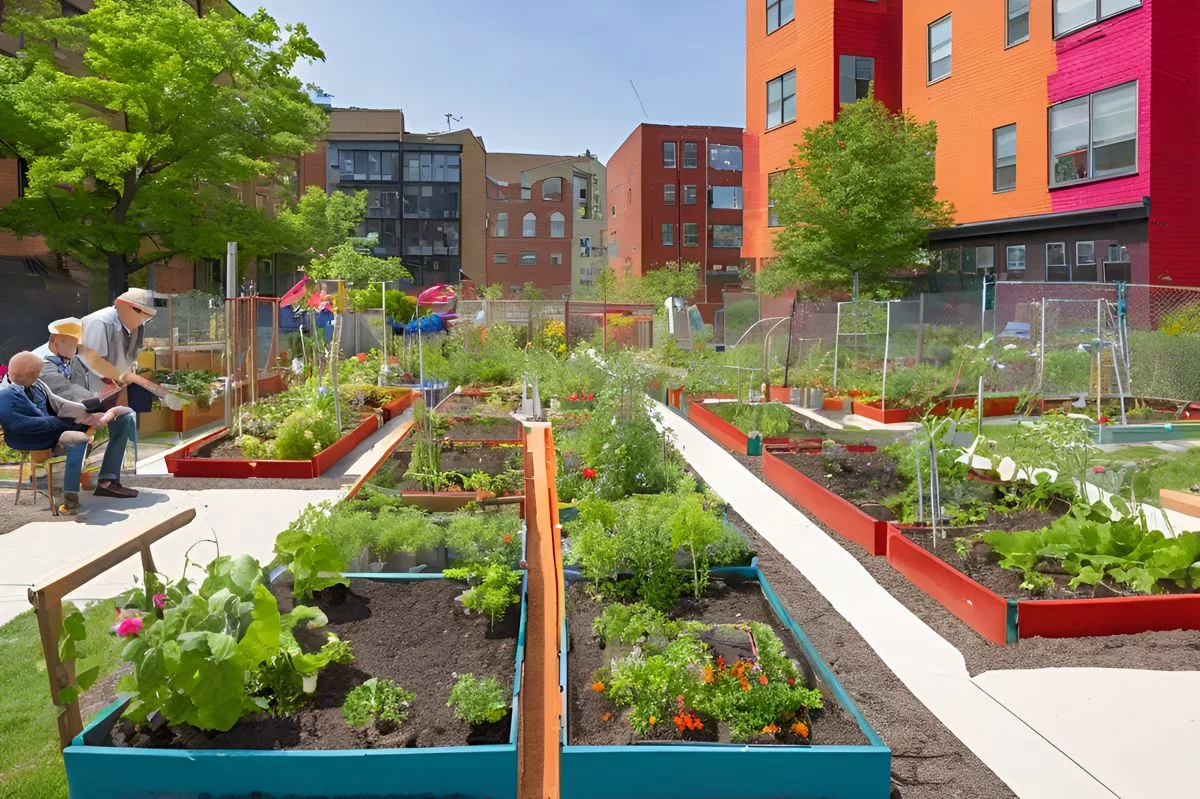Cissie Gool House is a shining symbol of hope in Cape Town’s fight for affordable housing. In 2017, brave activists transformed an old, neglected hospital into a home for 900 people, creating a vibrant community that stands against unfair housing practices. Their struggle has sparked important conversations with city leaders, who are now exploring ways to build more homes while ensuring current residents are not pushed out. This story shows the power of people coming together, fighting for their rights, and dreaming of a better future where everyone can have a place to call home.
What is the significance of Cissie Gool House in the fight for affordable housing?
Cissie Gool House represents a pivotal achievement in affordable housing activism in Cape Town. Occupied in 2017 by housing advocates, it transformed from a neglected hospital into a home for 900 people, symbolizing grassroots resistance and community empowerment against urban displacement and social injustice.
Occupation of Woodstock Hospital: A Bold Stand
In 2017, a dedicated group of housing activists took a decisive step by occupying the neglected Woodstock Hospital in Cape Town. Their goal was to draw attention to the City of Cape Town’s unfulfilled promise of delivering affordable housing close to the city center. Seven years later, this once-abandoned building has been transformed into Cissie Gool House, a home for approximately 900 people. This occupation, led by activist organizations Reclaim the City and Ndifuna Ukwazi, has become a powerful symbol of grassroots resistance and community strength.
The road has been far from easy. From the very beginning, there was significant friction between the activists and the City. The City viewed the occupation as illegal, arguing that it hindered the development of necessary social housing. Conversely, the activists believed that the City’s serious consideration of inner-city social housing began only after the occupation of Woodstock Hospital and the old Helen Bowden Nurses Home gained public attention.
In 2021, the Western Cape High Court allowed the City to survey the residents, further straining relations and bringing underlying mistrust to the surface. However, recent developments suggest a potential breakthrough that might satisfy both parties involved.
A Glimmer of Hope: Mayor’s Olive Branch
Mayor Geordin Hill-Lewis has recently shown willingness to engage with the residents of Cissie Gool House, proposing incremental development at the Woodstock Hospital site. This move, although met with cautious optimism, represents a significant shift in the long-standing standoff. The City has committed to developing social housing at the site, but numerous challenges remain.
Reclaim the City has expressed cautious support for the incremental development approach, stressing that current residents must not be displaced. The organization appreciates Hill-Lewis’s willingness to communicate, but remains wary due to past failed dialogue attempts since the 2017 occupation. Just last month, the City announced its intent to initiate a public participation process to release the site for affordable housing. During a Council meeting, Hill-Lewis described the Woodstock Hospital as one of Cape Town’s ‘biggest social housing opportunities’.
Despite this progress, the path forward is laden with complexities. Hill-Lewis proposed that some occupants might temporarily move to the courtyard and garden area during the building’s phased development. He clarified that only those who meet certain criteria would return as beneficiaries, raising concerns about the potential displacement of current residents who do not qualify.
Community Involvement and Skepticism
Bevil Lucas, a leader of Reclaim the City and a resident of Cissie Gool House, pointed to a 2019 City-commissioned report that mentioned incremental development without displacing people. Lucas hopes the City will stick to this commitment and involve the community actively in the process. While skeptical, Lucas acknowledges some significant events that have helped move things forward. The City’s tender for a facilities manager for the occupation and a heritage impact assessment of the building have been crucial. Additionally, residents teamed up with an architect to design a proposal for affordable housing at the hospital, which they presented at a public event. This design process empowered the Woodstock community to offer concrete solutions for housing in their neighborhood.
Despite the City’s public statements, Lucas remains cautious. He notes that the hospital residents are preparing a response to the City to facilitate ongoing engagement. To further their cause, the residents have organized a public meet and greet to showcase their ongoing struggle for housing justice in Cape Town. This event will also include a tour of the occupation, giving the public a firsthand look at their reality. A similar event at the Helen Bowden Nurses Home will happen simultaneously, offering a unique chance for the public to witness and support the fight for equitable access to housing in Cape Town.
Broader Implications: A Fight for Rights
The story of Cissie Gool House is more than just an occupation; it is a testament to the enduring spirit of a community fighting for its right to live with dignity. This struggle resonates with historical movements where marginalized groups have asserted their rights against formidable odds. The occupation of Woodstock Hospital echoes broader themes of urban displacement and social justice that have defined many activist movements globally.
The artistic undertones of this struggle can be compared to the Situationist International movement of the 1950s and 60s. Like the Situationists, who aimed to reclaim urban spaces for public use through direct action, the occupants of Cissie Gool House have turned an abandoned building into a vibrant community space. This act of reclamation challenges the commercialization of urban space and underscores the need for inclusive city planning.
The occupation of Woodstock Hospital is also part of a broader historical trend of squatting movements. From autonomous housing projects in Berlin to squats in London’s East End, such movements have aimed to address housing crises and resist gentrification. These movements, marked by collective action and community solidarity, have often led to significant political and social changes.
The Path Forward: Resilience and Solidarity
As discussions between the City and the activists continue, it is crucial to acknowledge the broader implications of this struggle. It is not only about housing; it is about the right to the city, the right to remain in spaces where one has built a life, and the right to participate in shaping the urban landscape. The residents of Cissie Gool House remind us of these fundamental rights through their actions and resilience.
The ongoing story of Cissie Gool House exemplifies the larger struggle for social justice in urban spaces. It highlights the importance of inclusive development and genuine engagement between policymakers and communities. As Cape Town grapples with its housing challenges, the experience of Cissie Gool House offers valuable lessons in resilience, community solidarity, and the transformative power of grassroots activism.
“`markdown
What is Cissie Gool House and its significance in affordable housing?
Cissie Gool House is a transformed former hospital in Cape Town that now serves as a home for approximately 900 people. It symbolizes grassroots resistance and community empowerment against urban displacement and social injustice, marking a significant achievement in the fight for affordable housing activism in the city.
Why did activists occupy the Woodstock Hospital in 2017?
Activists occupied the neglected Woodstock Hospital to draw attention to the City of Cape Town’s unfulfilled promise of delivering affordable housing near the city center. This bold move aimed to highlight the urgent need for social housing solutions and initiated public discourse around urban housing practices.
What recent developments have occurred regarding Cissie Gool House?
Recently, Mayor Geordin Hill-Lewis has shown willingness to engage with residents of Cissie Gool House, proposing incremental development at the Woodstock Hospital site. Although this has sparked cautious optimism, many challenges remain, including concerns about the potential displacement of current residents during the development process.
How are residents involved in the development process?
Residents of Cissie Gool House are actively involved in the housing development process, including collaborating with architects to design proposals for affordable housing. They have also organized public events to showcase their ongoing struggle for housing justice, allowing for community participation and engagement with the broader public.
What challenges do residents face in their fight for affordable housing?
Residents face several challenges, including skepticism towards the City’s commitment to not displace current occupants during the proposed development. Past failed dialogue attempts and concerns about eligibility for returning as beneficiaries add to the complexities of their situation.
What broader themes does the story of Cissie Gool House represent?
The story of Cissie Gool House exemplifies broader themes of urban displacement, social justice, and the right to the city. It echoes historical movements where marginalized groups assert their rights against formidable challenges, emphasizing the need for inclusive city planning and community solidarity in the quest for a dignified living environment.
“`












